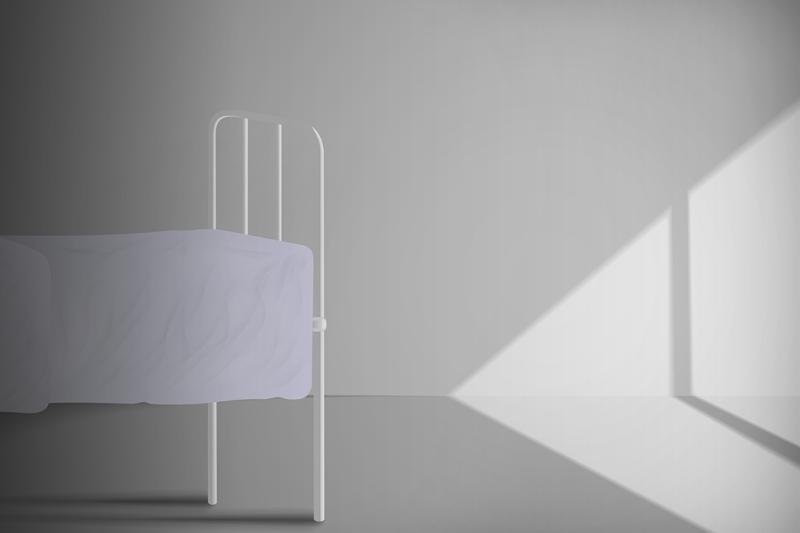The Little-Known History of the Forced Sterilization of Native American Women | JSTOR Daily
By: JSTOR Daily



Two fifteen-year-old Native American women went into the hospital for tonsillectomies and came out with tubal ligations. Another Native American woman requested a "womb transplant," only to reveal that she had been told that was an option after her uterus had been removed against her will. Cheyenne women had their Fallopian tubes severed, sometimes after being told that they could be "untied" again.
For many, America's history of brutal experimentation on people of color is perhaps best summed up by the Tuskegee Experiment, in which doctors let African-American men suffer from syphilis over a period of 40 years. But another medical outrage is less well-known. Jane Lawrence documents the forced sterilization of thousands of Native American women by the Indian Health Service in the 1960s and 1970s—procedures thought to have been performed on one out of every four Native American women at the time, against their knowledge or consent.
Both the IHS and its dark history of forced sterilization were the result of longstanding, often ham-fisted attempts to address American Indians' health care needs, writes Lawrence. Medical services were part of U.S. agreements with sovereign tribes from as early as 1832, when a treaty with the Ho-Chunk, then often called the Winnebago, included the services of a physician in exchange for land in what is now Wisconsin. With the arrival of the Progressive Era, health interventions became even more of a priority and the Department of the Interior and later the newly-formed Indian Health Service devoted resources to education and medical care for American Indians on reservations.
Though the IHS did deliver better health care, it operated under historical assumptions that native people and people of color were morally, mentally, and socially defective long after it was founded in 1955. "Some of [the IHS doctors] did not believe that American Indian and other minority women had the intelligence to use other methods of birth control effectively and that there were already too many minority individuals causing problems in the nation," writes Lawrence.
Assisted by government assumptions that high Native American birth rates should be stemmed, and bolstered by lax law enforcement and inaccurate descriptions of medical procedures provided to women who thought they were being treated for things like appendicitis, a rash of forced sterilizations began in the 1960s. Even after legislation designed to protect women from forced sterilization was passed in 1974, the abusive sterilizations continued. Between 1970 and 1976 alone, between 25 and 50 percent of Native American women were sterilized.
The results are still felt within tribes today. Lawrence documents everything from divorce to depression, but writes that perhaps the most dramatic effect to Native Americans at large was tribes' loss of political power due to their dwindling numbers. Combined with the forced assimilation of Native American children of earlier generations in compulsory boarding schools and modern-day failures of social services to place Native American children in foster care with Native parents in accordance to modern child welfare laws, the forced sterilization of Native American women is another page in the long book of abuse wrought upon Native peoples by the United States.
The experiences of Native women who were sterilized against their will are much like those of other women of color, like the African-American women who were sterilized under North Carolina laws until the early 1970s. But that doesn't mean it's any less outrageous—or that Native women are necessarily safer now. "Sterilization abuse has not been reported recently on the scale that occurred during the 1970s," writes Lawrence, " but the possibility still exists for it to occur." It will take oversight and care by both community members and members of the public to preserve the health and welfare of Native communities in the future, but nothing can ever make up for the outrages perpetrated on them in the name of health.
Have a correction or comment about this article?
Please contact us.Native AmericanssterilizationAmerican Indian Quarterly
Resources
JSTOR is a digital library for scholars, researchers, and students. JSTOR Daily readers can access the original research behind our articles for free on JSTOR.
The Indian Health Service and the Sterilization of Native American Women By: Jane Lawrence American Indian Quarterly, Vol. 24, No. 3 (Summer, 2000), pp. 400-419 University of Nebraska Press





This took place in most of your lifetimes. It's not in the distant past.
Pretty much says it all.
I spent my first sixty years in Oklahoma which has the biggest NA population, at least percentage wise.
NA mortality has always been off the charts. It is a sad discussion that should be taken up elsewhere, but I can name scores of friends who died of drink.
Hopelessness and deep sadnes lead to illnesses...
The whole truth of the situation is complicated and difficult to talk about from any perspective. Your main point is what matters. This is not something from the past only to be discussed in historical terms. The suffering of America's Native Peoples is a current ongoing tragedy in many places, still...
Which we are seeing it unfolding in Canada currently.
Makes me wonder how anyone can believe human beings are basically good people. They have a hard time believing people can do things like this.
When I was a teen, I knew a young girl who when she was 14, went into one of these tribal clinics for painful periods. They said she needed a D&C, but what she also got was sterilized. She only found out when she tried to get pregnant as an adult. She had her future stolen from her. How do you make right something like that?
You can't make it right.
Has someone sued about this on behalf of the women in either state or federal court?
I'm sure that some have JR but they are suing a government agency, Indian Health Services, and chances of winning are almost non-existent.
They have never received an apology.
Government admits forced sterilization of Indian Women - Timeline - Native Voices (nih.gov)
Nothing can make this right, a disgrace in a long line of disgrace on this nation .. would an apology really mean anything?
Discussing American history on race as in African slavery and the removal of Natives is so threatening to some they demonize the very concept. See CRS...
Another little-known part of US history is that long before blacks were enslaved and brought to the US over 2 million Indians were enslaved.
In the near future, I'll post an article on it.
What you're seeing taking place in Canada right now is the tip of the iceberg. The ''Indian Boarding Schools'' in the US numbered over 350 and the same horrors took place here.
It is presumed that time heals all wounds ... always neglecting to see that scars remain, yet emotional scars can be ignored by the masses. The US is / was not the first to destroy lives and nature .. yet 'we' seem to think 'we' have a higher moral standing in the world - thus truth in history is rarely taught ...
If not for my great grandfather taking the time when I was a lil girl to share his wisdom - I would be among the ignorant .. alas, I still have to check myself in order to not be dismissive of the past, it is sadly easy to do by becoming defensive and saying my ancestors did not own slaves / my ancestors were friends to the indigenous peoples of eastern Montana .. [sigh]
The scars of the past run deep
I would hope that everyone would understand why they choose full-blooded Indian women, it was to delete the blood line, and eventually, the Indian race would disappear. The government has been trying to eliminate Indians for 500 years.
An apology means little.